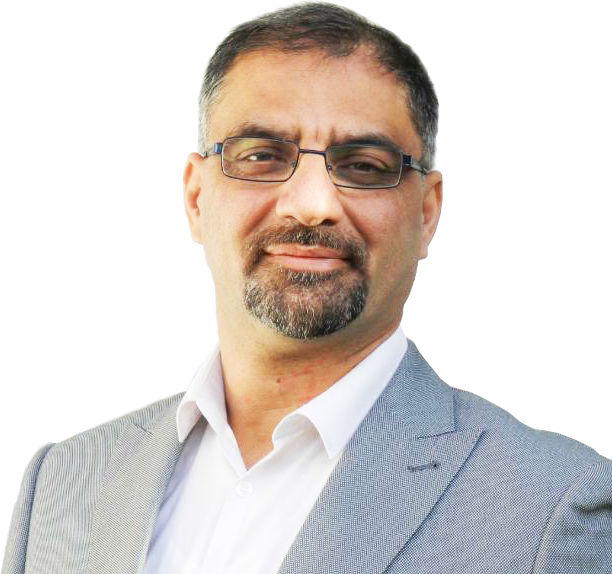Autism Spectrum Disorder (ASD) and Obsessive-Compulsive Disorder (OCD) are two distinct psychological and neurodevelopmental conditions that can significantly impact individuals’ daily lives. While both conditions involve challenges relating to repetitive thoughts and behaviors, they stem from different underlying mechanisms and manifest in unique ways. Understanding the differences and similarities between autism and OCD is crucial for accurate diagnosis, appropriate intervention, and fostering empathy and support in society. This article aims to explore these differences, focusing on their definitions, symptoms, diagnostic criteria, treatment approaches, and the lived experiences of individuals affected by these conditions in the context of the United Kingdom.
Autism Spectrum Disorder is a developmental condition defined by a range of characteristic features that affect social communication, behavior, and sensory processing. It is categorized as a “spectrum” because the symptoms and their severity can vary widely among individuals. Some children with autism may exhibit significant challenges in verbal communication and social interaction, while others may have average or above-average intelligence and distinctive skills in specific areas, such as mathematics, music, or technology. Common characteristics of autism include difficulties in understanding nonverbal cues, challenges in forming relationships with peers, and intense focus on specific areas of interest or repetitive behaviors. Many individuals with autism also experience sensory sensitivities that can lead to feelings of being overwhelmed in certain environments, making social situations particularly challenging.
In contrast, Obsessive-Compulsive Disorder is classified as an anxiety disorder and is characterized by persistent, intrusive thoughts (obsessions) and repetitive behaviors or mental acts (compulsions) that individuals feel driven to perform in response to their obsessions. These obsessions often provoke significant anxiety or distress, leading to compulsive behaviors aimed at reducing that anxiety. For instance, a person who has an obsession about dirt or contamination may engage in compulsive handwashing or cleaning to alleviate their distressing thoughts. Unlike autism, which is characterized by a broad range of social and behavioral challenges, OCD primarily focuses on the experience of anxiety and the compulsive strategies employed by individuals to manage that anxiety.
The motivations behind the repetitive behaviors observed in autism and OCD also differ considerably. In autism, repetitive behaviors may serve multiple functions, including self-soothing, sensory regulation, and enjoyment. For instance, an autistic individual might engage in rocking or spinning as a way to manage overwhelming sensory input or to find comfort in repetitive motion. These behaviors are typically not driven by the same compelling need to alleviate anxiety as is experienced in OCD. Instead, they often reflect the individual’s unique way of interacting with the world and coping with sensory challenges.
Conversely, the compulsive behaviors seen in OCD arise from a profound sense of anxiety that actually creates a cycle of obsession and compulsion. Individuals with OCD may engage in their compulsive rituals as a misguided attempt to prevent a feared outcome or to alleviate overwhelming anxiety. This cycle can be debilitating; while the compulsions may provide temporary relief, they ultimately reinforce the obsession, perpetuating the disorder. Understanding this distinction can inform how caregivers, educators, and health professionals approach individuals with these conditions, promoting more effective support strategies tailored to their needs.
The diagnostic criteria for both autism and OCD differ significantly, guided by established clinical frameworks. Autism Spectrum Disorder is typically diagnosed in childhood, often between the ages of two and four, when parents and caregivers notice atypical developmental milestones. Clinicians use a combination of behavioral assessments, observational tools, and parental reports to determine whether a child meets the criteria for autism as defined in the Diagnostic and Statistical Manual of Mental Disorders (DSM-5). Core areas of assessment include communication skills, social interactions, and behavioral patterns. An early diagnosis is crucial, as it allows for timely intervention, which can make a significant difference in the child’s ability to learn skills and adapt to the challenges they face.
On the other hand, Obsessive-Compulsive Disorder can be diagnosed at any age but frequently manifests during childhood, adolescence, or early adulthood. The diagnostic process for OCD involves a thorough evaluation to determine the presence of obsessions and compulsions and their impact on the individual’s functioning. Mental health professionals typically conduct clinical interviews and may use standardized questionnaires to assess the extent and nature of the symptoms. Unlike autism, where symptoms are observable and quantifiable, OCD often relies on an individual’s self-reported experiences of anxiety and distress, making accurate diagnosis critical but sometimes challenging.
Treatment approaches for autism and OCD differ not only in their focuses but also in the nature of interventions employed. For individuals with Autism Spectrum Disorder, a variety of interventions are available, often tailored to meet the unique needs of each individual. Common therapies include Applied Behavior Analysis (ABA), speech therapy, occupational therapy, and social skills training. ABA, in particular, focuses on modifying behavior by reinforcing positive actions and teaching new skills. Therapy can also address sensory sensitivities commonly experienced by individuals with autism, helping them navigate social settings more comfortably and effectively.
In the UK, access to autism services has improved over the years, with various organizations providing resources, support networks, and intervention programs designed to assist individuals with autism and their families. Schools have also begun implementing strategies to create inclusive environments for students on the spectrum, providing training for educators to better understand and support autistic students. Early intervention remains critical in promoting positive developmental outcomes, enabling individuals with autism to thrive in school and society.
In contrast, treatment for Obsessive-Compulsive Disorder primarily revolves around cognitive-behavioral therapy (CBT), specifically a form of CBT known as Exposure and Response Prevention (ERP). ERP involves exposing the individual to their specific fears while preventing them from engaging in compulsive behaviors. This therapeutic approach helps individuals learn that their fears can be confronted without resorting to compulsions, gradually reducing the anxiety associated with their obsessions. Additionally, medication such as selective serotonin reuptake inhibitors (SSRIs) may be prescribed to help manage OCD symptoms by addressing the underlying anxiety.
While both autism and OCD present challenges that can impact an individual’s quality of life, the lived experiences of those affected by these conditions highlight significant differences in how they navigate the world. Many individuals with autism express a desire for social connection and may experience frustration and loneliness due to their inability to form meaningful relationships. They may often feel misunderstood and marginalized, leading to anxiety, particularly in unfamiliar or overwhelming environments. Developing supportive communities and inclusive spaces is essential in fostering acceptance and understanding for individuals with autism. Schools and peer groups can play a vital role in cultivating welcoming environments that celebrate neurodiversity and promote empathy.
Individuals with OCD, conversely, may experience significant anxiety related to their intrusive thoughts and compulsive behaviors, leading to a relentless cycle of fear and avoidance. Their daily lives can be heavily impacted by the need to perform rituals or manage their anxiety, limiting their engagement in social activities or normal routines. The stigma surrounding mental health can also exacerbate feelings of isolation among those with OCD, as they might be reluctant to disclose their struggles due to fear of judgment. Encouraging open conversations about mental health can help break down these barriers and foster a more supportive environment for individuals grappling with OCD.
Despite their distinct characteristics, autism and OCD can occasionally co-occur, complicating the clinical picture and treatment process. Some individuals with autism may exhibit compulsive behaviors that resemble those seen in OCD, often leading to confusion in diagnosis. Individuals on the autism spectrum may engage in repetitive behaviors or rituals that might mimic the compulsive behaviors seen in OCD. However, the motivations for these behaviors differ: while the compulsions in OCD are driven by anxiety and the need to alleviate intruding thoughts, the repetitive actions in autism often serve to provide comfort, regulate sensory input, or fulfill a specific interest.
When autism and OCD do co-occur, the therapeutic approach must be carefully tailored to address the complexities presented by both conditions. Treatment may involve integrating strategies from both behavioral therapies for autism and evidence-based practices for managing OCD. This integrated approach requires a nuanced understanding from therapists and practitioners, ensuring they are equipped to support individuals in managing both sets of symptoms effectively. Collaboration between caregivers, educators, and mental health professionals is vital in creating a comprehensive support system for those with dual diagnoses.
In the UK, there has been a growing push towards increasing understanding and support for neurodiversity, including both autism and OCD. Advocacy groups and educational programs are crucial in raising awareness and promoting acceptance of individuals with these conditions. Mental health campaigns strive to reduce stigma surrounding both autism and OCD, emphasizing the importance of compassion and understanding. As society becomes more aware of these differences, we can work collectively to create supportive environments that empower individuals to thrive.
Furthermore, the development of online platforms and virtual communities has become increasingly valuable for individuals with autism and OCD. These spaces provide opportunities for sharing experiences, accessing resources, and finding support from peers who understand the unique challenges faced by each condition. For parents and caregivers, connecting with others navigating similar experiences can offer solace and practical strategies, fostering a sense of community and belonging.
As the conversation around mental health continues to evolve, it is essential to emphasize the importance of early intervention and ongoing support for individuals affected by autism and OCD. Access to mental health services within the UK remains a pertinent concern, with many individuals waiting extended periods for assessments or treatment. Ensuring timely access to diagnosis and intervention is critical in promoting the well-being of individuals with these conditions while emphasizing the importance of adequate funding and resources for mental health services.
In conclusion, while Autism Spectrum Disorder and Obsessive-Compulsive Disorder share some superficial similarities, they are fundamentally distinct conditions with different origins, symptoms, and treatment approaches. Autism emphasizes challenges in communication, social interaction, and sensory processing, while OCD revolves primarily around anxiety-driven obsessions and compulsions. Recognizing these differences enhances our understanding and support for individuals living with these conditions and fosters acceptance and inclusion in society.
Raising awareness about autism and OCD can help dismantle myths and misconceptions, facilitating a deeper understanding of the experiences faced by those affected. In the UK, promoting resources, support networks, and educational programs aimed at improving communication and reducing stigma can empower individuals with autism and OCD to navigate their worlds more effectively. With concerted efforts towards fostering compassion and understanding, society can better accommodate the diverse needs of individuals on the autism spectrum and those living with OCD, ultimately promoting a healthier, more inclusive environment for all.
In striving for a future that embraces neurodiversity and mental health awareness, we can create spaces that celebrate the rich tapestry of human experience and cultivate understanding in our local communities. By doing so, we not only support individuals coping with autism and OCD but also contribute to a more empathetic and connected society, ultimately benefiting everyone. The road to improved understanding, acceptance, and support begins with education, open dialogue, and a commitment to creating a world where all individuals, regardless of their neurological makeup, can thrive and realize their full potential.



